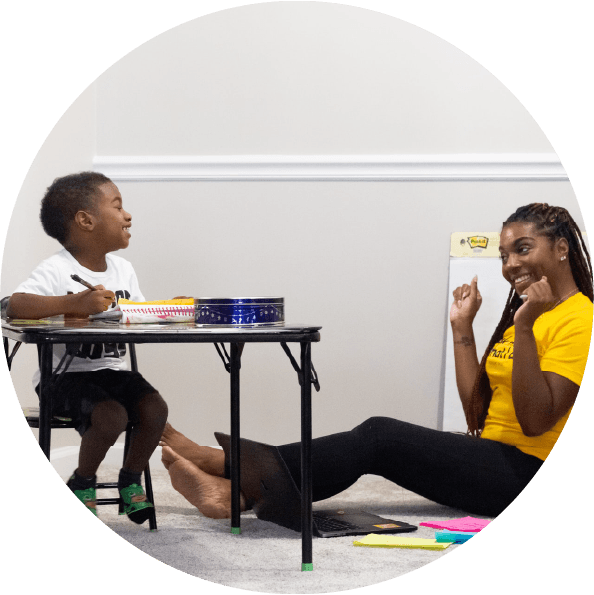Learning to Listen - The Story of Listen-2-Me ABA
AD
Meet Listen-2-Me ABA
We’re grateful to Listen to Me ABA for being a title sponsor for the 2025 Autism Family Costume Party. Partnerships like this help us connect families with real people and real services, and we’re excited for the chance to bring caregivers and providers into the same room. The Autism Dads Social Club does not endorse any particular company or service provider. Our aim is to introduce families to resources and welcome them to choose the service that best suits them.
As Listen to Me ABA’s story shows, many ABA founders and professionals become acquainted with autism through parenting. Albert, a dad whose journey with his son led him to become a BCBA and CEO of an ABA company, is one of several parents in our local network who turned personal experience into service to the autism community. In the Q&A below, we ask questions that helps readers become acquainted with Listen-2-Me ABA.
Why was Listen-2-Me ABA founded?
As a Board Certified Behavior Analyst (BCBA) who has worked with large organizations, I often found that the voices of both practitioners and families were underrepresented. For example, I strongly believe in providing robust parent training—so that families can actively support their children outside of scheduled sessions. However, many organizations discourage this in favor of prioritizing staff-led, 1:1 treatment hours that maximize billable time.
To me—both as a BCBA and as a parent—the central mission should be empowering parents and equipping them with a deeper understanding of Applied Behavior Analysis (ABA). This doesn’t mean reducing the intensity of clinical interventions, but rather expanding their impact: children receive their therapeutic services and parents implement those same principles continuously in everyday life. In my experience, when parents and professionals collaborate, progress is far more sustainable and meaningful.
My philosophy is simple: parents and BCBAs working together create real change. True progress emerges not from top-down mandates, but from reciprocal, respectful relationships between families and organizations. It is through that partnership that we can make a difference that truly lasts.

How did you choose the name “Listen-2- Me ABA”?
Growing up, my son would often say, “Listen to me”—especially when he was engaging in attention‑seeking behaviors that others might label inappropriate. In my training and ABA experience, I was taught to “ignore” behaviors that didn’t meet a strict definition of acceptable.
Then one day, something shifted. I realized: my son was trying to communicate, and his available tools were those very behaviors we were ignoring. He wasn’t demanding attention for its own sake—he was inviting connection. From that moment, I began to see that children with autism don’t want to be dismissed or overlooked—they want to be heard, understood, and engaged.
Children with autism are not inherently unsocial; quite the opposite—they crave interaction, especially with the people who matter the most: their parents. That insight inspired the name “Listen‑2‑Me.” Through this work, my mission is to empower parents, providers, and communities to truly listen to our children—to support their passions, nurture their growth, and build meaningful relationships founded in respect and understanding.
What makes your ABA approach unique for families in our local community?
We place our highest priority on teaching children functional communication, because our greatest hope is for our young learners to express themselves clearly to their parents. As a father, there is nothing more rewarding than hearing my son say, “I love you.” That simple phrase motivates me every day.
My goal is to train our staff to teach expressive language—whether through words, gestures, or natural communication—so parents can hear their children’s hearts. We believe in using natural language throughout our instruction, embedding communication in everyday moments rather than limiting it to formal sessions.
Our mission is to empower children to communicate, parents to understand, and our community to support growth, connection, and love.

How do you involve parents and caregivers in therapy—and what does progress look like week to week?
We believe that parents should be deeply involved in treatment at every possible level. To that end, we offer group parent trainings via telehealth so that caregivers can participate monthly, learn new strategies, and feel supported. We also maintain internal communication platforms where parents can view their child’s progress in real time during therapy sessions.
One of our core commitments as an organization is to accept fewer cases per BCBA so that staff can devote more hours to parent training, ensuring that parents have access to someone who can answer questions, monitor progress, and provide ongoing guidance.
How would you describe your care team, approach, and core values?
My mother taught me a core value: always do the right thing, no matter what. As CEO, I carry that with me in every decision. I am constantly thinking about my kiddos and our staff—making sure each learner receives the best treatment possible. This means staying current with evidence‑based practices and being willing to innovate when it benefits our learners.
For instance, we recently established a new department focused on social skills, using virtual reality (VR) as a tool to give learners a safe, engaging environment to practice real‑world interaction. Research has shown that VR interventions can significantly improve social skills in children and adolescents with autism. In systematic reviews, VR has been shown to support learners in both developing complex social interactions and reinforcing fundamental social behaviors.
Another of my fundamental values is transparency. When something isn’t working, we don’t shy away—we have tough, honest conversations with parents. We discuss what’s missing, what adjustments are needed, and how we can partner more effectively to push for the progress we know is possible.
What goals do you commonly target?
We seek to engage parents. We are committed to conducting monthly virtual meetings so that parents have a dedicated space to ask questions, receive support, and access information about ABA and community resources. Our aim is to connect with parents for at least one hour per month. These gatherings do more than provide information—they foster a community: parents get to meet and support one another, and we have an opportunity to offer honest and transparent updates about progress, challenges, and next steps. Our ultimate aspiration is to stay connected to families, cultivating positive and collaborative relationships within the community we serve.
One of the first five families to join us had a young boy who was only using “more” and “I want” statements. When the family saw our mission on the website—especially our commitment to teaching natural expressive language—they asked how we put that into practice. I explained the difference between simple requesting (“I want…” / “more”) and teaching tacts—labels or comments about what a child observes in their environment.
The family was excited and chose Listen‑2‑Me as their ABA provider. After 18 months with us, we are preparing to graduate him from ABA services: his language is now natural, and he plays and interacts comfortably with general education students at school.
Because this family was one of the first to believe in our mission, we had the privilege of witnessing his full growth. The mother is overjoyed that her son is doing the same things other children are doing in his general education classroom—playing, talking, participating. It’s moments like this that reaffirm why we do this work: to help children not only learn, but truly belong.
